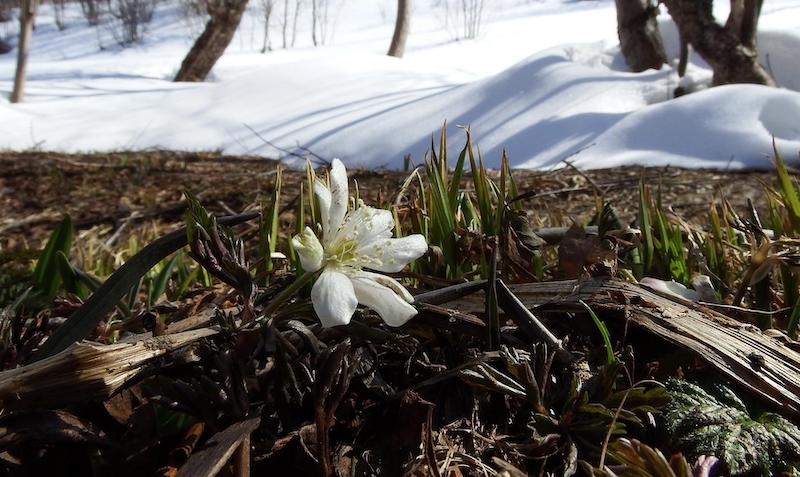Growing Windflowers
Windflowers are a colorful group of poppy-like flowers known for their delicate petals dancing in the breeze. Gardeners can grow both spring and fall flowering varieties of nearly every color in hardiness zones 4 through 8. Originating in Greece, Anemone blanda or commonly Anemone are named after the Greek word for wind (anemos).
Windflowers are a part of the buttercup family known as Ranunculaceae and grow 6 inches to 4 feet tall from a tuberous rhizome called a corm. Windflowers prefer ordinary to well-drained soil with partial to full sun depending on climate.
Planting Windflowers
Windflowers grow from corms/root clumps that must be soaked in water to rehydrate prior to planting. Windflowers prefer cooler temperatures, so in cooler climates full sun will be preferred, whereas in warmer climates, partial shade may provide better conditions. However, the diversity of needs within the windflower family can vary, so always check your specific variety before selecting a planting site.
Windflowers prefer even moisture, but will suffer from rot if waterlogged. Therefore it is important to amend the soil prior to planting. First loosen the soil, then add organic matter/leaf mold to improve water holding capacity, then bone meal/bulb fertilizer, and finally gravel/sand to improve drainage if your soil is slow draining.
Once all amendments have been added, mix the soil and plant the windflowers 2 inches deep, spaced 2-3 inches apart. Water the plants in lightly after packing the soil.

Watering Windflowers
Windflowers thrive with consistently moist soil, but will rot if waterlogged. To avoid rot, make sure to water windflowers regularly when the surface of the soil is dry to the touch. How often you will need to water will depend mostly upon your climate. In warm/dry climates, check the soil every 3-5 days. In cooler/wetter climates, watering may only be required once per week (especially if it frequently rains).
Fertilizing Windflowers
Windflowers overall are not very fussy and can produce lots of flowers without fertilizer. The best time to apply fertilizer (if desired) is during planting at a rate of approximately 1 teaspoon of bone meal per plant. A bulb fertilizer or diluted all-purpose fertilizer may be substituted for bone meal.
Even though it is not required (especially if fertilizer was applied during planting), an annual application of fertilizer may be applied annually at a rate of 0.5-1 teaspoon of bone meal sprinkled around each plant. For spring flowering varieties, apply in the fall; for fall flowering varieties, apply in the spring.
The most recommended fertilizer for windflowers is bone meal. However, a low dose of a bulb or all-purpose fertilizer with an NPK ratio similar to bone meal is also acceptable (3-15-0).
Pruning Windflowers
Actively growing foliage should never be removed from windflowers, which means they are low maintenance and require no pruning. As a rule, once the leaves have wilted and you can remove leaves from the roots easily with a gentle pull, then you may tidy up your windflowers by removing the foliage.
After flowering, windflowers continue to store energy for next year, so removing foliage before it dies naturally may weaken the plant.
Caring For Windflowers in Pots
Windflowers can grow exceptionally well in pots when placed in a sunny location and provided with consistently moist soil. It is important for pots to have a drainage hole and for some organic matter to be added to the substrate to aid in moisture retention; a light layer of mulch may also help. The other important aspect of potted windflowers is the winter chill period.
In milder climates (where temperatures are consistently 32 degrees Fahrenheit or above), planters may be left outside for the winter; otherwise, pots will need to be kept somewhere sheltered but not heated, so that they are protected from frost but still experience cold.
Winter Care for Windflowers
Windflowers typically overwinter well under a generous 3-4 inch layer of mulch with adequate moisture from snow or rain (or supplemented water in drier climates). However, in harsh winter climates, it is best to dig corms/root clumps up in the fall and store them inside during the winter. This process is only recommended for fall flowering varieties.

Common Pests for Windflowers
Windflowers experience issues with a number of pests, but overall the risk of fatality from pest damage is low. Slugs and snails tend to feed on windflower leaves, but are easily deterred with commercial products such as Sluggo. Foliar nematodes (microscopic worms from the soil) are the most serious issue.
Feeding from nematodes can distort leaves and flowers due to damaged plant cells. Treatment is often difficult, but the best course of action is to trim/remove any affected tissues and dispose of them immediately. Turning over/churning the soil periodically to allow the sun to bake it may rid the area of nematodes, but with limited success.
Common Questions About Windflower
Do Windflowers Come Back Every Year?
The plant will continue to grow and flower again the following year.
Why Is My Windflower Dying?
There are many variables outside our control and yours that can cause the demise of your plant(s). Examples would be hungry animals, drought, poor soil conditions, over-watering, disease, insects & many other factors.
Are Windflowers Hard To Keep?
They are relatively carefree plants once established. Windflowers are easily cultivated.
What Is The Growth Rate Of Windflowers?
It takes 12-15 weeks for the Windflower to mature and begin flowering. Flowering usually continues for 3 to 6 weeks. They are fast-growing plants and will bloom in the first season.
Why Is My Windflower Turning Brown?
Some browning of plants and flowers can be normal. Blooms will brown and die after blooming; old leaves will turn brown and be replaced by new leaves. Brown leaves and flowers can also be signs of watering problems, infections or insects, soil pH issues, and nutrient deficiency issues.
Have a question about Windflower? Fill out the form below and we will try and get back to your question as soon as possible. We may even feature your question in this article to help other gardeners!
 |
Author Chris Link - Published 07-21-2022 |

